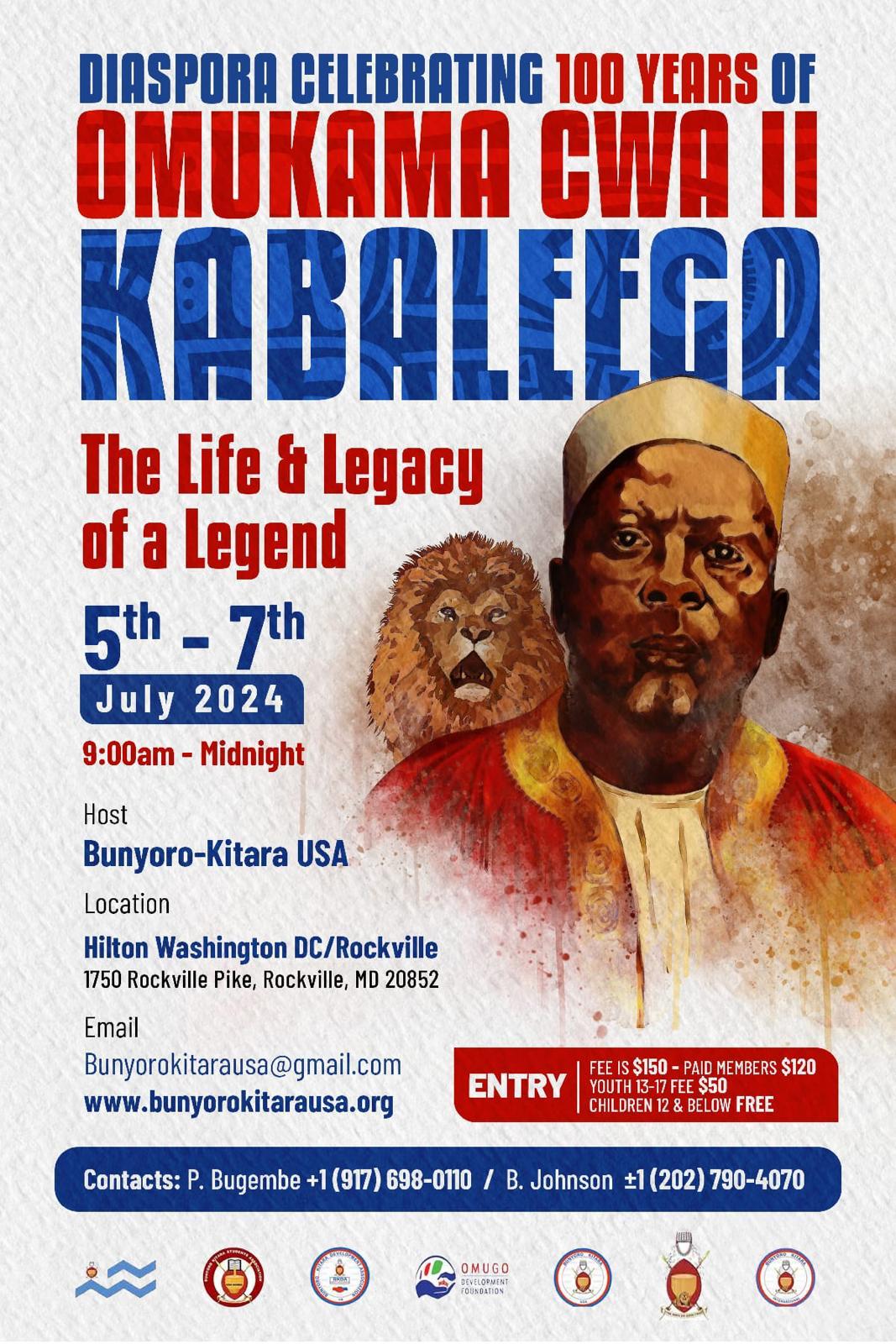Bunyoro Kitara North America was started in 2009 by a small group of enthusiastic Banyoro Leaders in Maryland USA. It has since grown tremendously with a vision to promote culture and socio-economic development within the Banyoro that live and work within the Northern American communities.
Bunyoro Kitara North America Association {BUKINAA) is legally registered in the USA as a 501(C) (3). BUKINAA currently has a registered membership of over 300 members across North America making it the largest formal association of Banyoro in North America.
BUKINAA was founded to create a platform for the Banyoro that will be used to interact & forge beneficial partnerships for social-economic advancement; network, share, and experience the Bunyoro culture, explore & coordinate the abundant opportunities in their adopted communities in North America.
The Banyoro in North America are part of the underserved populations culturally, socially and economically. BUKINAA was established to initiate and facilitate programs/activities to address our core objectives as per our mission.
Our Mission
The Mission of Bunyoro-Kitara North America Association(BUKNAA) is to promote the cultural and socio-economic development of Banyoro(Banyakitara) people in the Diapora and Uganda
Objectives
- Encourage all Banyoro to help each other deal with the challenges of living abroad.
- Interact, network, and forge partnerships for economic advancement of Banyoro in the Diaspora
- Promote the advancement of the social, cultural, educational, healthcare, and economic development of Banyoro and Bunyoro-Kitara Kingdom
- Provide a Platform for getting together to celebrate our culture in the Diaspora
- Find ways to empower youths in Bunyoro-Kitara Kingdom
- To work woth other community organisations to fully integrate new Banyoro into the Diaspora and act as a vehicle for civic participation
- To work towards acquiring property in terms of land and buildings, all necessary equipment’s for community purposes (offices, meeting rooms, resource and social function centers
- To support the Omukama(king) in his efforts to develop our Kingdom
1. Runyoro Dictionary: This was created to promote the language and culture of the Banyoro and friends of Banyoro. http://runyorodictionary.com/ is continuously being developed to accommodate more words and translations both from English to Runyoro and Runyoro to English.
2. Social Gatherings: These include picnics, and conventions aimed at bringing our communities and friends together inline objective 2 above.
3. Charity Work: 1) The association provides a $250 scholarship fund annually to underserved students in the Bunyoro Sub-region. 2.) Vocational training (art & crafts, Information Technology) and 3) Water sanitation projects in Bunyoro (in feasibility study stage).
4. Books and Articles: Author children and adult books pertaining to Bunyoro culture and history by the association members. This also includes compilation of existing cultural literature for; publication and online accessibility.
ORIGINS OF BUNYORO-KITARA THE OMUKAMA’S (KINGS)
I. The Batembuzi Dynasty
II. The Bachwezi Dynasty
II. The Babiito Dynasty
Bunyoro-Kitara Anthem
Chorus
Bunyoro-Kitara Tukugonza Nyinaitwe, itwe abaana abeihanga abakutamu ekitiinisa
1st Stanza
Lero turakoraki, tukugizi mukama, nitwijuka ekitiinisa ky’eihanga lyaitu Bunyoro
Chorus
Bunyoro-Kitara Tukugonza Nyinaitwe, itwe abaana abeihanga abakutamu ekitiinisa
2nd Stanza
Emyenda ya kitara tukwatanize hamu twesigege omukama nukwo twombeke ge Bunyoro
Chorus
Bunyoro-Kitara Tukugonza Nyinaitwe, itwe abaana abeihanga abakutamu ekitiinisa
Last Stanza
Munjura N’omwihunga, murubaale n’enkuba kutufeere hali Bunyoro
Chorus
Bunyoro-Kitara Tukugonza Nyinaitwe, itwe abaana abeihanga abakutamu ekitiinisa
100 years of Omukama Cwa II Kabaleega
